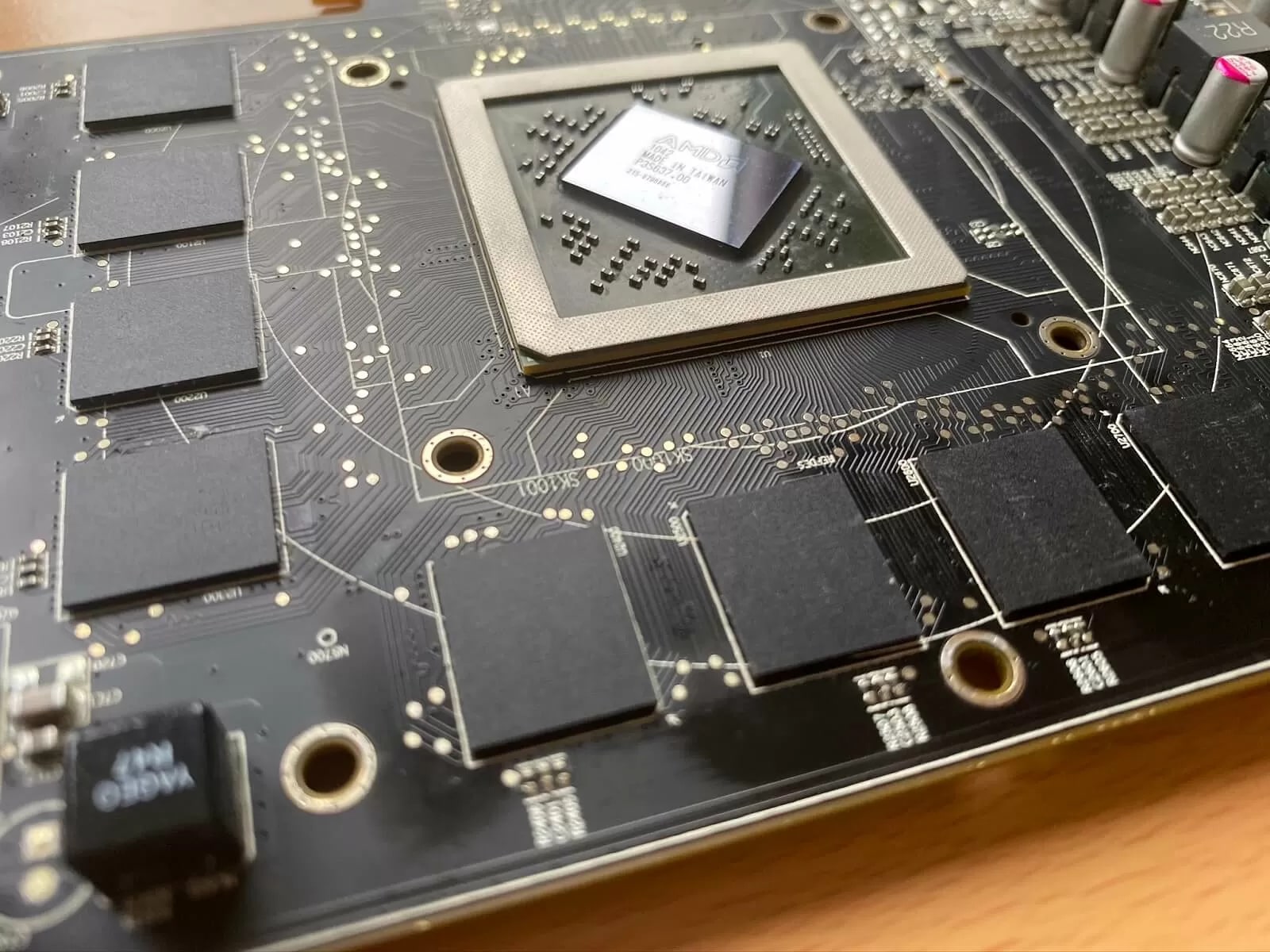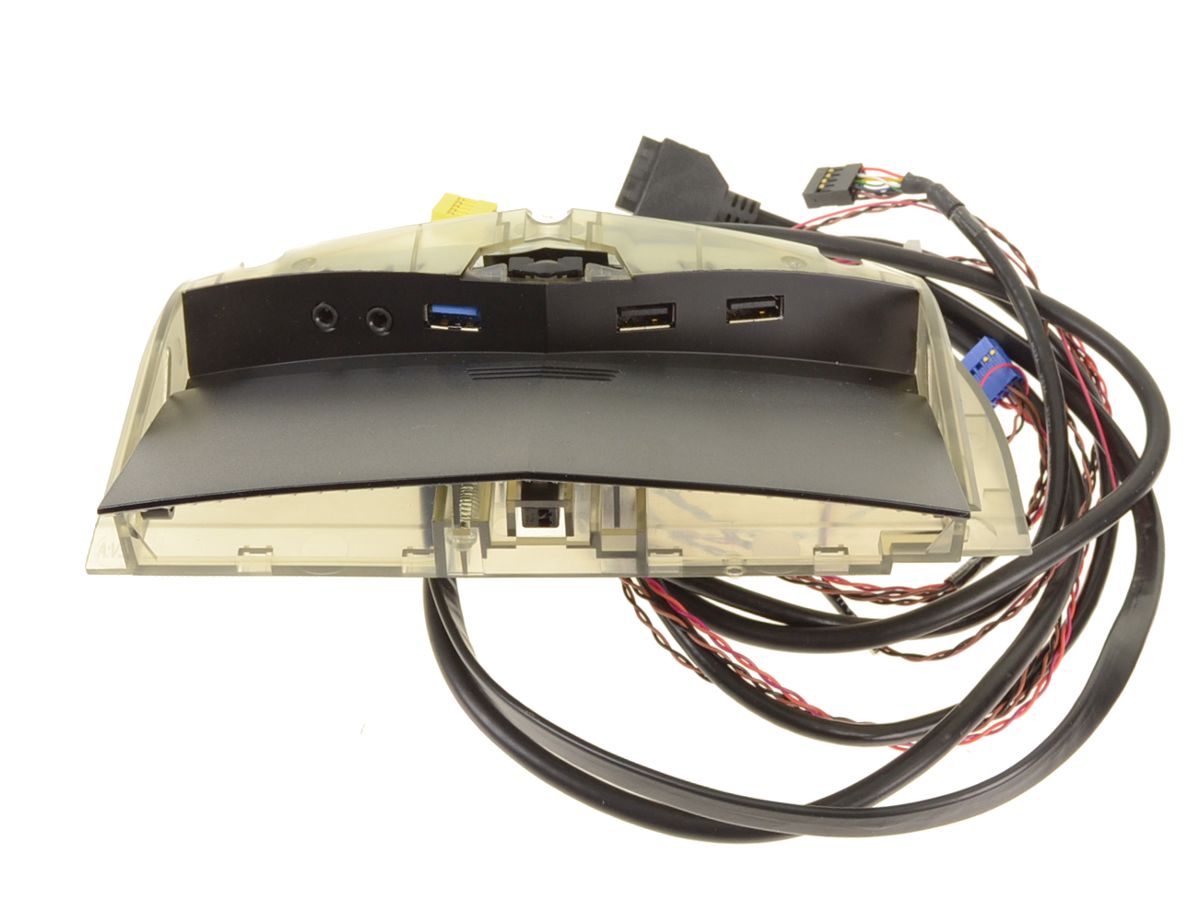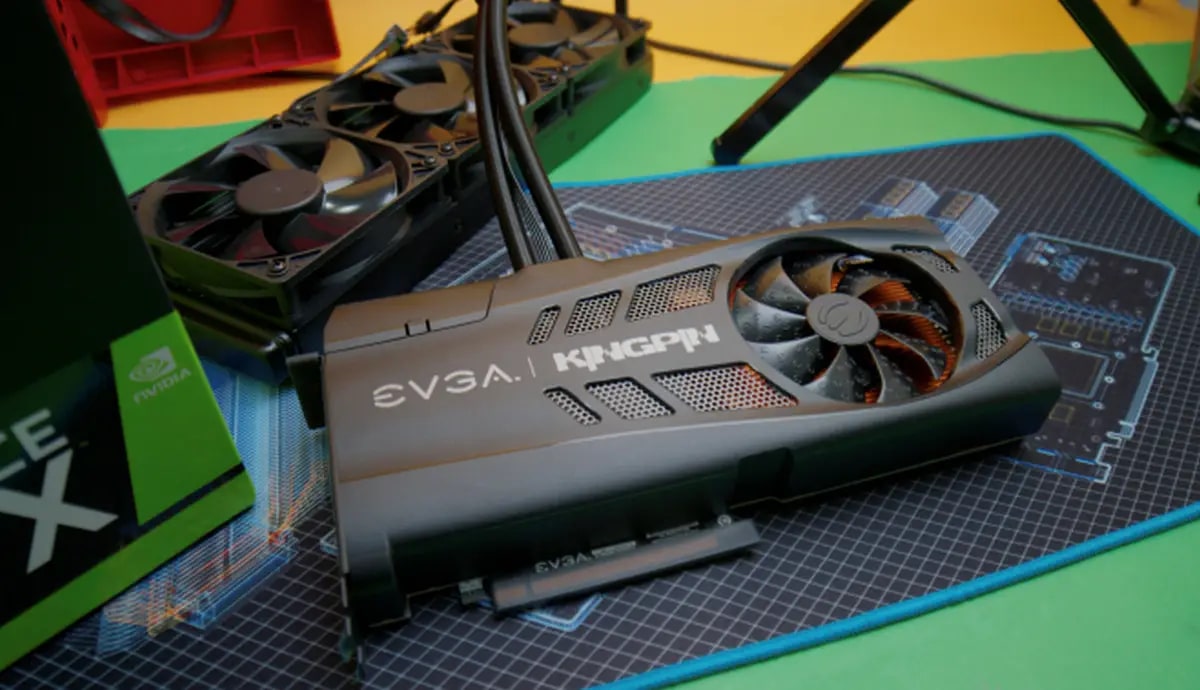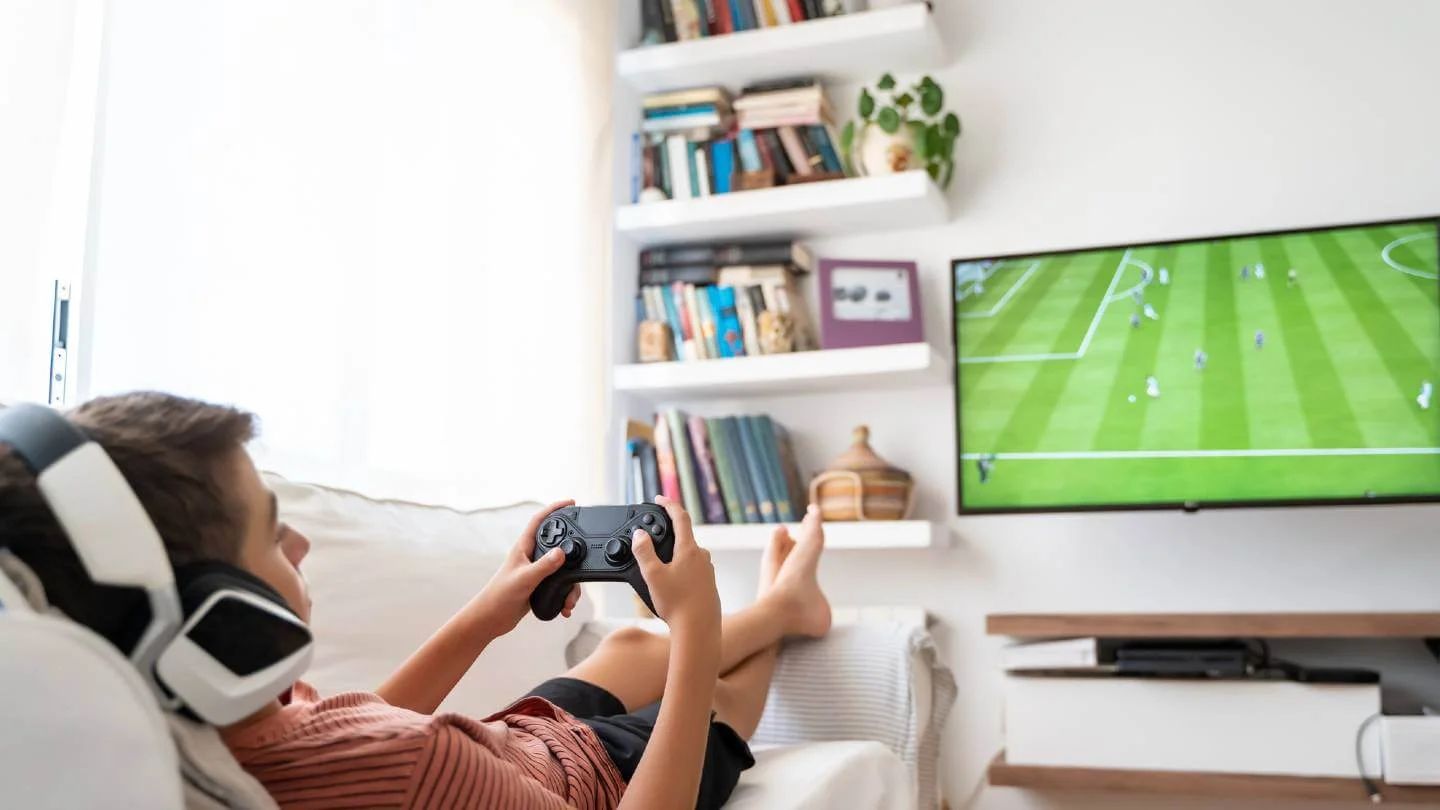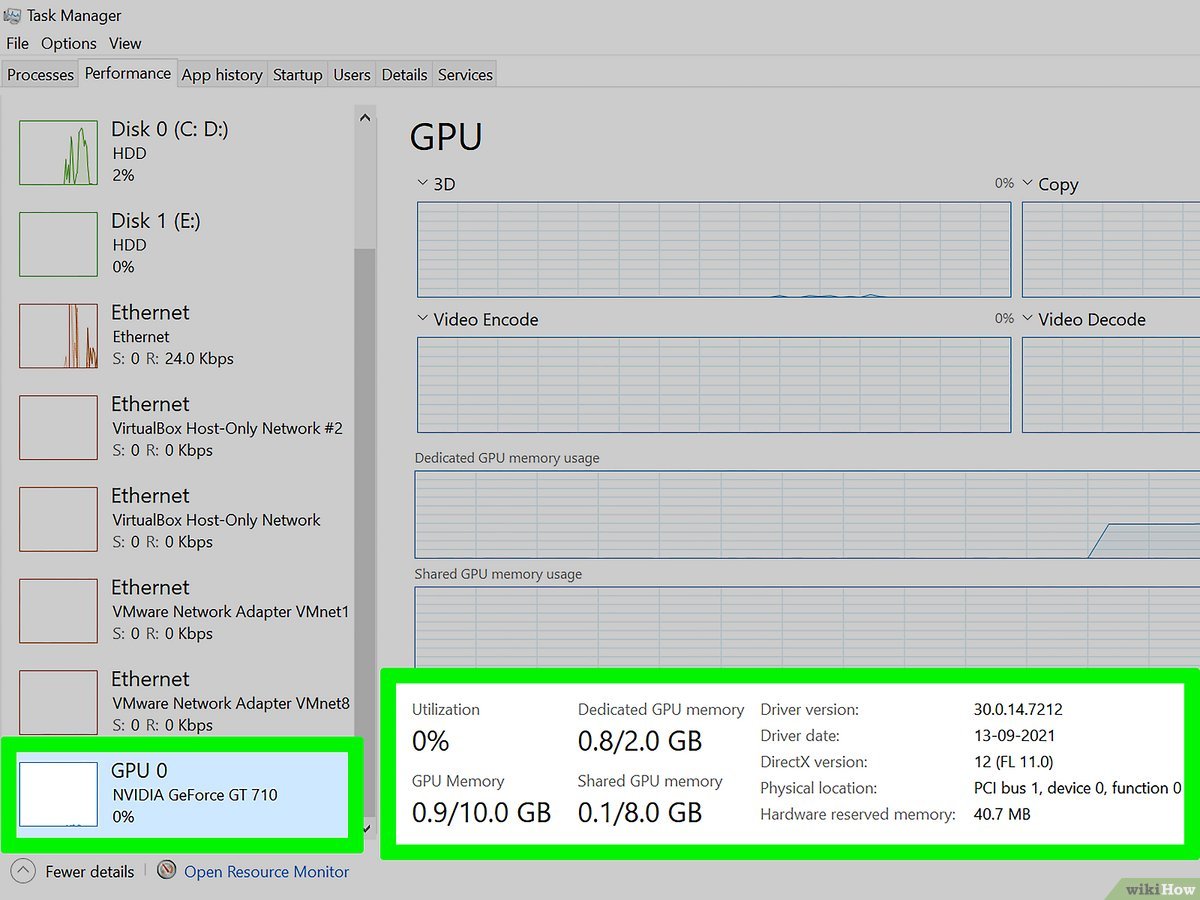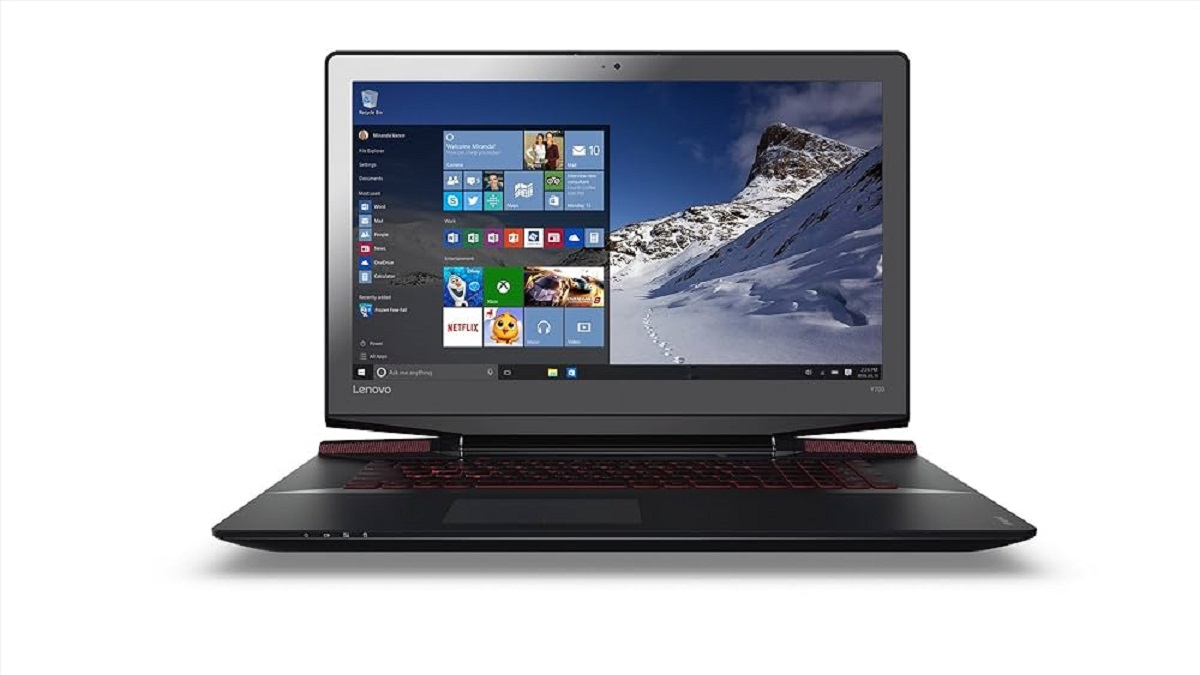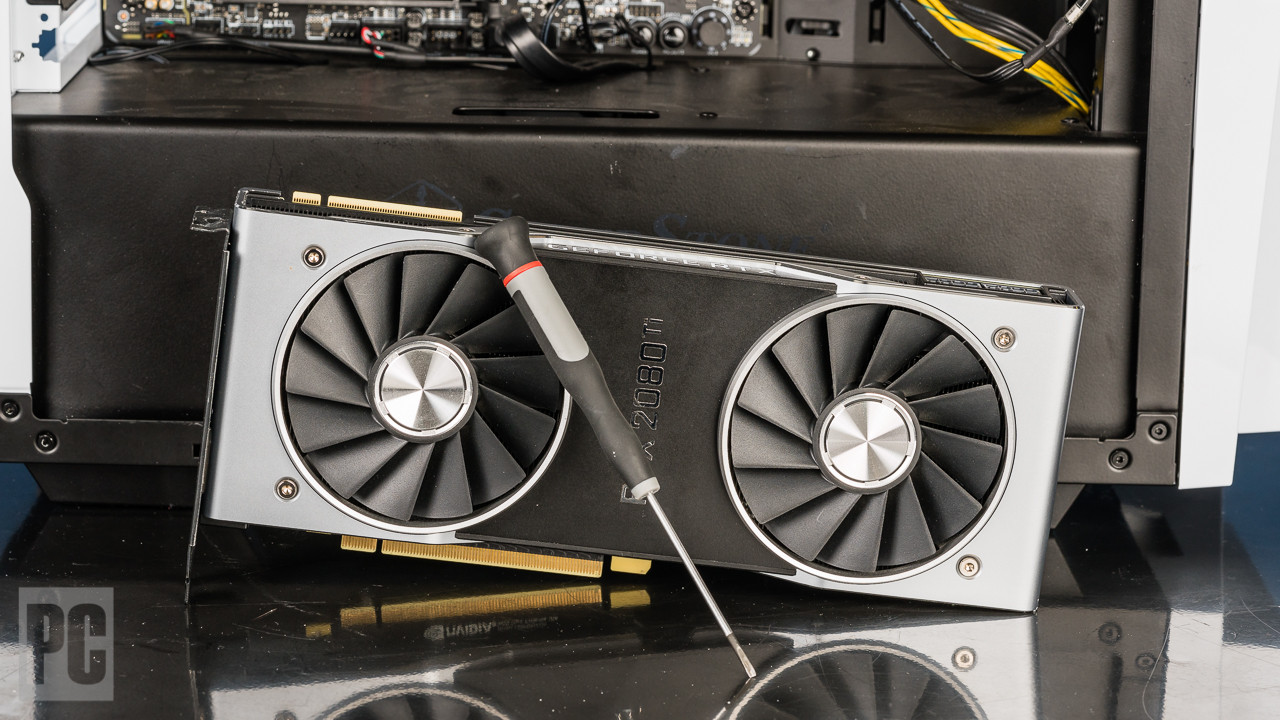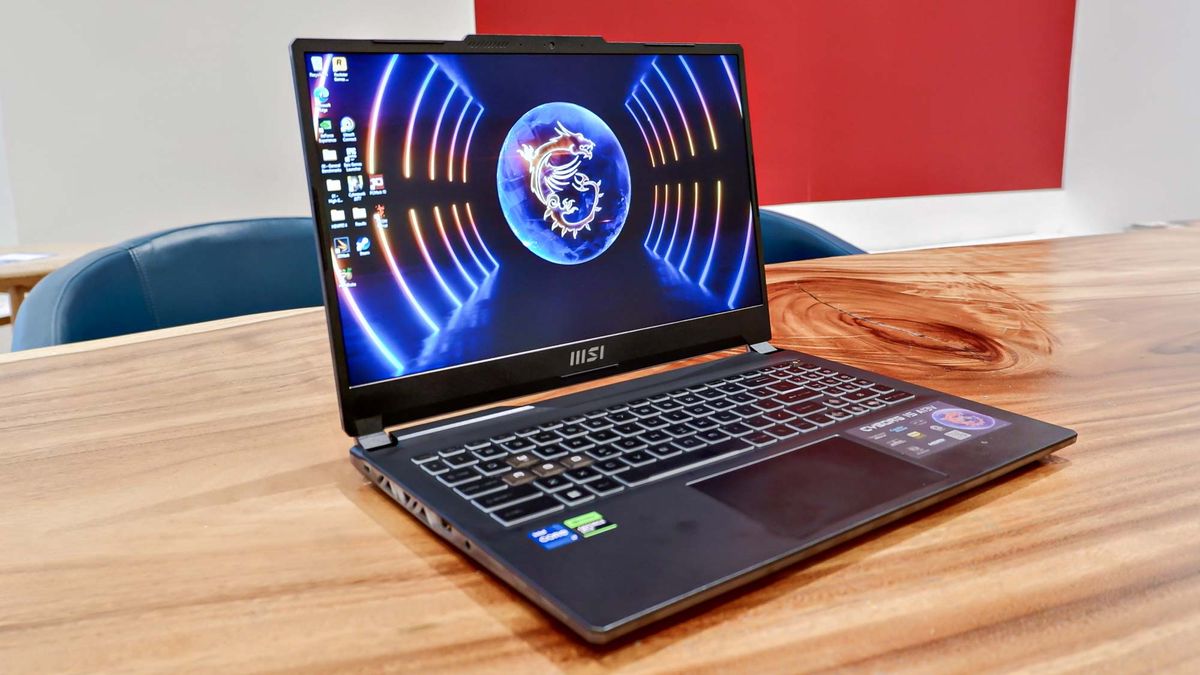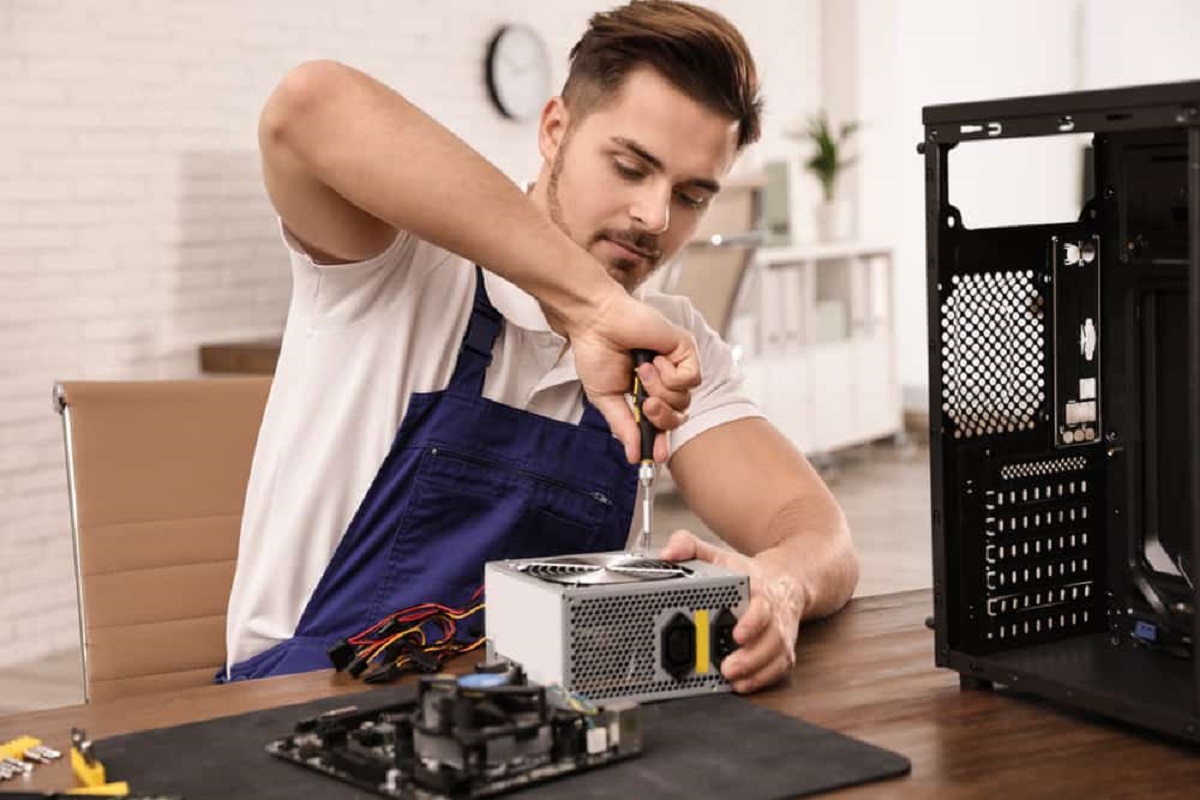Introduction
Welcome to the world of PC gaming, where the power and performance of your graphics card play a crucial role in delivering an immersive gaming experience. However, at times, you may notice that your graphics card is underperforming, causing frustration and hindering your gaming enjoyment. In this article, we will explore some common reasons why your graphics card may be struggling to deliver the expected performance.
Before we dive into the potential causes, it’s important to understand that a graphics card’s performance is influenced by various factors including power supply, heat management, driver updates, and compatibility with other components. By identifying and addressing these issues, you can optimize your graphics card’s performance and get the most out of your gaming experience.
It’s worth mentioning that the solutions provided in this article assume you have a basic understanding of computers and are comfortable making necessary changes to your system. If you’re unsure or uncomfortable with any of the troubleshooting steps, it’s always a good idea to consult a professional or seek assistance from a knowledgeable friend.
Now, let’s jump into the potential reasons behind your underperforming graphics card and explore the troubleshooting steps you can take to resolve the issue.
Insufficient Power Supply
One common reason why your graphics card may be underperforming is due to an insufficient power supply. Graphics cards require a certain amount of power to operate at their full potential, and if your power supply unit (PSU) doesn’t meet the recommended requirements, it can lead to reduced performance.
To determine if insufficient power supply is the culprit, check the power requirements of your graphics card and compare it to the wattage output of your PSU. If your PSU falls short, it’s advisable to upgrade to a higher wattage unit that can adequately power your system.
Additionally, it’s important to consider any other components that draw power from your PSU, such as your CPU and peripherals. If you have an overclocked CPU or numerous power-hungry devices connected to your system, it can put additional strain on your PSU and potentially impact your graphics card’s performance.
When upgrading your PSU, ensure that it has the necessary power connectors for your graphics card. Modern GPUs often require additional power connections, such as 6 or 8-pin PCIe connectors. Failing to provide the appropriate power connections can lead to instability and underperformance.
Another aspect to consider is the overall quality of your PSU. Cheap or outdated power supplies may not deliver consistent power, resulting in fluctuating voltages that can affect your graphics card’s performance. Invest in a reputable PSU brand with good reviews to ensure stable power delivery to your system.
In summary, if your graphics card is underperforming, insufficient power supply could be the culprit. Consider upgrading to a higher wattage PSU that can meet the power demands of your graphics card and other components. Additionally, ensure that your PSU offers the necessary power connections and provides stable power output to optimize your graphics card’s performance.
Graphics Card Overheating
Overheating is a common issue that can negatively impact the performance of your graphics card. When a graphics card exceeds its thermal limits, it can result in reduced clock speeds, throttling, or even system crashes. Here are some reasons why your graphics card might be overheating and steps you can take to address the issue.
Dust accumulation is a major culprit behind overheating. Over time, dust and debris can clog the cooling fans and heatsinks of your graphics card, hindering proper airflow. Regularly clean your graphics card using compressed air or a small brush to remove any dust buildup and improve heat dissipation.
Inadequate ventilation inside your computer case can also contribute to overheating. Ensure that your case has sufficient cooling options, such as additional case fans or liquid cooling solutions, to improve air circulation. Additionally, proper cable management can help optimize airflow and prevent cables from obstructing the cooling components of your graphics card.
Another common cause of overheating is overclocking beyond the card’s capabilities. If you have manually increased the clock speeds or voltage settings of your graphics card, it can lead to excessive heat generation. Resetting the card to its default settings or reducing the overclock can help lower temperatures and improve performance.
Applying a high-quality thermal paste to the graphics card’s GPU and replacing the thermal pads on the memory modules can also help dissipate heat more efficiently. Over time, the thermal paste and pads may degrade, leading to poorer heat transfer. Consult your graphics card’s manufacturer guidelines for proper application and choose reputable thermal paste for optimal results.
Lastly, consider the ambient temperature of your gaming environment. High room temperatures can contribute to increased heat inside your computer case. Ensure that your gaming area is adequately cooled to prevent excessive heat buildup.
To monitor the temperature of your graphics card, you can use software tools that provide real-time temperature readings. If temperatures consistently exceed the recommended limits, despite taking the steps mentioned above, you might consider investing in additional cooling solutions, such as aftermarket coolers or GPU water blocks.
Remember, addressing graphics card overheating is essential to maintain optimal performance. By keeping your graphics card cool, you can avoid throttling and ensure smooth gameplay.
Outdated Drivers
Outdated graphics card drivers can significantly impact the performance of your graphics card, leading to underperformance and stability issues. It’s important to keep your drivers up to date to ensure compatibility and take advantage of any performance improvements or bug fixes provided by the manufacturer.
Updating your graphics card drivers is relatively simple. Most graphics card manufacturers provide dedicated software that allows you to automatically check for driver updates. For example, NVIDIA offers the GeForce Experience software, while AMD provides the Radeon Software. These applications scan your system, detect the graphics card model, and provide you with the latest driver updates.
If you prefer a more manual approach, you can visit the website of your graphics card manufacturer directly and search for the latest drivers specific to your card model. Be sure to download the correct drivers for your operating system.
Before installing a new driver, it’s advisable to first uninstall the previous one. This helps eliminate any potential conflicts or corrupted driver files. Use a tool like Display Driver Uninstaller (DDU) to completely remove the old driver before installing the new one.
After installing the updated drivers, it is recommended to restart your computer to ensure the changes take effect. Restarting also helps to clear any residual files or settings from the previous driver installation.
Regularly checking for and installing driver updates can not only improve the performance of your graphics card but also ensure compatibility with the latest games and applications. It’s a simple and effective way to optimize your gaming experience.
Additionally, if you experience issues after updating your drivers, such as graphical glitches or system instability, you can try rolling back to a previous driver version. Most driver software has an option to revert to the previously installed driver, allowing you to troubleshoot and determine if the issue is specific to the updated driver.
Keeping your graphics card drivers up to date is an essential step in maintaining optimal performance and compatibility. Take the time to regularly check for updates and install them as needed, and you’ll likely see improvements in both game performance and stability.
Bottlenecked by CPU
If your graphics card is underperforming, it’s important to consider the role of your CPU. In some cases, the graphics card may be bottlenecked by an older or slower CPU, preventing it from reaching its full potential.
A bottleneck occurs when the performance of one component in your system is significantly hindered by another component. In the context of graphics card performance, a CPU bottleneck can limit the graphics card’s ability to fully utilize its capabilities.
To determine if your CPU is bottlenecking your graphics card, you can monitor their usage while running demanding applications or games. If you notice that your CPU is consistently at or near 100% utilization while your graphics card is not reaching its full potential, it may be a sign of a bottleneck.
If you find that your CPU is indeed causing a bottleneck, there are a few potential solutions. The first option is to consider upgrading your CPU to a newer and more powerful model. This will help ensure that your CPU can keep up with the demands of your graphics card and eliminate the bottlenecking effect.
Before upgrading your CPU, it’s essential to ensure compatibility with your current motherboard. Research compatible CPU models that offer improved performance and fit within your budget. It’s also advisable to consult the manufacturer’s guidelines for compatible CPUs and any necessary BIOS updates.
Another option is to make optimizations within your system to alleviate the bottlenecking. This can involve adjusting in-game settings to reduce CPU-intensive tasks, such as reducing the draw distance or shadow quality. Additionally, closing unnecessary background applications and processes can free up CPU resources for the game or application.
It’s worth noting that while addressing a CPU bottleneck can improve graphics card performance, it may not completely eliminate all performance limitations. Other factors, such as insufficient RAM or storage speed, can also contribute to underperformance. Therefore, it’s essential to consider the whole system’s configuration and ensure that all components are balanced.
By addressing a CPU bottleneck, you can ensure that your graphics card is not being held back by an underperforming processor. Whether through upgrading your CPU or optimizing system settings, taking steps to eliminate the bottleneck will result in improved overall performance and a better gaming experience.
Insufficient RAM
Insufficient RAM, or random access memory, can significantly impact the performance of your graphics card. RAM plays a crucial role in storing and quickly accessing data that is needed by your system and applications. Without enough RAM, your graphics card may struggle to process and render complex graphical elements, leading to underperformance.
To determine if insufficient RAM is causing your graphics card to underperform, monitor your system’s RAM usage while running demanding applications or games. If you notice that your RAM usage consistently approaches or exceeds its maximum capacity, it’s a clear indication that you may need more RAM.
Upgrading your RAM can be a relatively simple and cost-effective solution to improve the performance of your graphics card. Check your motherboard’s specifications to determine the maximum amount of RAM it can support and the compatible RAM types. Consider increasing your RAM capacity to match the requirements of the applications and games you use.
In addition to increasing the amount of RAM, you can also optimize your system’s RAM usage. One of the most effective ways to do this is by closing unnecessary background applications and processes that are consuming RAM. This frees up memory for your graphics card to utilize more efficiently.
Another helpful optimization is to adjust the virtual memory settings of your operating system. Virtual memory, or the page file, allows your computer to use a portion of your hard drive as additional RAM. By increasing the size of the page file, you provide more virtual memory to support your graphics card’s operations.
However, it’s important to note that while increasing your RAM can certainly improve performance, having excessive amounts of RAM beyond what your system requires may not provide significant benefits. It’s essential to strike a balance and ensure that your RAM capacity matches the needs of your system and applications.
By addressing insufficient RAM, you allow your graphics card to access and process data more efficiently, resulting in improved performance and smoother gameplay. Whether through upgrading your RAM or optimizing its usage, taking steps to alleviate the RAM bottleneck will contribute to a better overall gaming experience.
Graphics Card Not Properly Connected
If your graphics card is underperforming or not functioning at all, one possible reason could be that it is not properly connected to your motherboard. Ensuring a secure and correct connection between your graphics card and motherboard is crucial for optimal performance.
The first step is to physically check that the graphics card is securely seated in the PCIe slot. Sometimes, due to slight movements or vibrations, the card can become loose over time. Turn off your computer, open the case, and carefully remove and reinsert the graphics card, making sure it is firmly and correctly seated in the slot.
Additionally, check that the power connectors are securely plugged into the graphics card. Many modern graphics cards require additional power connections, such as 6 or 8-pin PCIe power connectors. Ensure that these cables are properly connected and fully inserted into the card. Loose or improperly connected power cables can lead to unstable power delivery, causing the graphics card to underperform or not function at all.
Some high-end graphics cards also require a separate power connection from the PSU to the GPU’s cooling system. This connection is often in the form of a small, multi-pin connector. If your card has this requirement, ensure that this connection is properly established to ensure proper cooling performance.
Once you have double-checked the physical connections, it’s important to also ensure that the graphics card is recognized and properly set in your system’s BIOS. Restart your computer and enter the BIOS/UEFI setup. Look for settings related to the graphics card and ensure that it is set as the primary display device. This step ensures that your system recognizes and utilizes the graphics card as the main rendering device.
If you have recently installed or replaced your graphics card and are experiencing issues, it’s worth checking if your power supply unit (PSU) can adequately support the power requirements of the new graphics card. If your PSU does not provide sufficient power, it may lead to underperformance or instability. Consider upgrading to a higher wattage PSU if necessary.
By ensuring that your graphics card is properly connected, both physically and in the system settings, you can eliminate any potential issues related to connectivity and optimize the performance of your graphics card.
Background Processes and Software Interference
Background processes and software interference can have a significant impact on the performance of your graphics card. These processes, such as unnecessary applications running in the background or conflicting software, can consume system resources and cause your graphics card to underperform. It’s important to identify and address these issues to optimize your graphics card’s performance.
One common culprit is background applications that run automatically upon startup. These applications may not be essential to your gaming experience but can consume valuable system resources. To alleviate this, you can use the Task Manager (Windows) or Activity Monitor (Mac) to identify and close any unnecessary processes running in the background. This frees up system resources and allows your graphics card to focus on its intended tasks.
Another potential source of interference is conflicting software, such as antivirus programs or graphics card management tools. While it’s essential to have security software installed, some antivirus programs include additional features that can conflict with your graphics card drivers or limit performance. Consider adjusting the settings of these programs or temporarily disabling them to see if they affect your graphics card’s performance.
Similarly, graphics card management tools provided by card manufacturers, such as MSI Afterburner or ASUS GPU Tweak, may come with overlays, monitoring features, or overclocking options. While these tools can be useful, they can also interfere with your graphics card’s performance if not properly configured. Ensure that you are using the latest version of the software and adjust any settings that may impact performance, such as limited power targets or excessive overclocking.
It’s worth mentioning that drivers, which were covered earlier in this article, can also fall under the category of potential software interference. Outdated or incompatible drivers can cause performance issues or even prevent your graphics card from functioning correctly. Therefore, keeping your drivers up to date is essential for optimal performance.
In some cases, background processes interfering with your graphics card’s performance may require more advanced troubleshooting. It may be helpful to consult online forums, seek assistance from knowledgeable users, or contact customer support for guidance specific to your software and hardware setup.
By identifying and addressing background processes and software interference, you can optimize your graphics card’s performance. Closing unnecessary background applications, adjusting conflicting software settings, and keeping your drivers up to date all contribute to a smoother and more enjoyable gaming experience.
Factory Overclocking and Overheating
Factory overclocking is a feature that some graphics card manufacturers offer, where the GPU and memory clock speeds are boosted beyond the standard specifications. While overclocking can provide a performance boost, it can also lead to overheating and potential stability issues if not properly managed.
When a graphics card is factory overclocked, it means that it is designed to operate at higher clock speeds than the reference model. While this can result in improved performance, it also generates more heat. If your graphics card is underperforming or experiencing stability issues, it’s worth checking if overheating caused by factory overclocking is the culprit.
One way to address this issue is to reduce the overclocking settings of your graphics card. This can be done through the graphics card management software provided by the manufacturer. By reducing the clock speeds closer to the reference values, you can decrease the heat generated by the card and potentially improve stability.
Proper cooling is a critical factor when dealing with factory overclocked graphics cards. Ensure that your computer case has adequate airflow with well-placed case fans. Keeping your case clean from dust and debris also helps maintain optimal cooling performance. Consider investing in aftermarket cooling solutions, such as additional case fans, aftermarket GPU coolers, or liquid cooling systems, to further enhance heat dissipation.
Monitoring the temperatures of your graphics card is essential when dealing with factory overclocking. Use software tools provided by graphics card manufacturers or third-party applications, such as MSI Afterburner or HWMonitor, to monitor the GPU temperature. If temperatures consistently exceed safe limits, it’s a sign that additional cooling measures may be necessary.
Lastly, it’s crucial to keep in mind that factory overclocking voids the warranty for most graphics cards. If your graphics card is still under warranty, it’s advisable to consult the manufacturer’s guidelines and support to ensure that any modifications or changes you make to the card do not invalidate the warranty.
In summary, factory overclocking can provide performance benefits but can also lead to overheating and stability issues if not properly managed. By reducing overclocking settings, ensuring proper cooling, and monitoring temperatures, you can optimize the performance and stability of your graphics card while avoiding potential overheating problems.
Conclusion
When your graphics card is underperforming, it can be frustrating and hinder your overall gaming experience. However, by understanding the potential causes and taking the necessary steps to address them, you can optimize your graphics card’s performance and unlock its full potential.
We explored several common reasons for underperforming graphics cards, including insufficient power supply, graphics card overheating, outdated drivers, CPU bottlenecks, insufficient RAM, graphics card not properly connected, background processes and software interference, and factory overclocking. Each of these factors can have a significant impact on your graphics card’s performance, and addressing them can make a noticeable difference in your gaming experience.
Whether it’s upgrading your power supply for adequate power delivery, optimizing cooling solutions to prevent overheating, ensuring you have the latest drivers installed, addressing CPU bottlenecks or insufficient RAM, properly connecting your graphics card, managing background processes and software interference, or handling factory overclocking appropriately, each solution is a step towards achieving optimal performance.
Remember to approach each troubleshooting step with caution and make changes that are suitable for your system configuration. If you are unsure or uncomfortable with any of the steps, seek assistance from professionals or browse online forums for guidance specific to your hardware and software setup.
By taking the time to identify and resolve the underlying causes of your graphics card’s underperformance, you can elevate your gaming experience to new heights. Enjoy smooth gameplay, stunning visuals, and the immersive world of PC gaming as your graphics card delivers its full potential.







